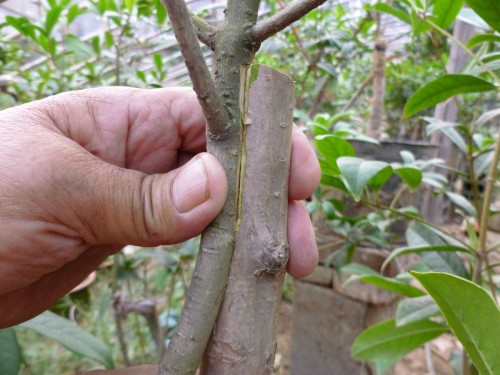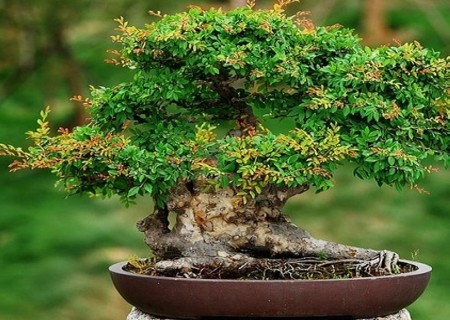Transplanting technique of Sabina vulgaris bonsai
Many people not only like the juniper bracelet, but also want to get a bonsai. Sabina vulgaris is a prehistoric plant, originated more than 300 million years ago, is a Cretaceous relict plant in the dinosaur era, known as the world's rarest and oldest gymnosperms, is an extremely rare only living plant fossil in the world. In the process of digging the cypress, the brothers in the mountains often dig up some live materials, and there are also special materials to be used to make bonsai. If you want to plant a live cypress, you must master the following cultivation links.
The vitality of Sabina vulgaris is relatively strong, mainly through transplanting cultivation for reproduction. For the fertilization choice of Sabina vulgaris soil, we should choose fertilizers with good permeability, pay attention to the treatment of insect control, and pay attention to regular insect control. It is best to spray insect bites once a week after transplantation. Just spray it six or seven times in total.
1. Dig
The root is the least suitable to dig, but as long as there are two or three small red roots, there is also hope of survival, the more leaves, the better. Having roots and leaves is the first root for the survival of the cypress. If there are no roots and leaves, no matter how hard you try, it is futile.
2. Time
The shorter the time from picking and digging from the cliff to the soil, the better, and the living trees should be planted that night after going down the hill. If you don't plant at that time, you can put it in a warm, humid dark place, keep it moist with sprinkling water and spray, and don't soak the roots in water.
3. Using soil
Cultivation soil must be permeable, breathable, loose mixed soil, do not use pure soil, generally add 80% of the river sand. In the area of Taihang Mountain, it is best to use the coal ball which has no fire gas for a period of time after burning. The waste coal ball ash is aseptic, permeable and breathable, and has good moisturizing properties, which is very suitable for the cultivation of Sabina vulgaris. When watering, the water must seep into the soil within 2 or 3 seconds and flow out of the basin bottom.
4. Moisturizing and temperature control
Newly planted Sabina vulgaris had better be cultivated in greenhouse, which is the best way to improve the survival rate, which can keep moisture and control temperature. The main purpose of moisturizing and temperature control is to keep the trunk and leaves from losing water, maintain life, and continue to take root and sprout. In the growing period, the basin soil can not be dry, the humidity of the environment should be kept above 70%, and the temperature is 25 to 35 degrees, which is the best time for Sabina vulgaris to take root and sprout. Pay attention to ventilation.
5. Lighting
The new tree of Sabina vulgaris has very few roots, and the function of absorbing water is already very weak. at this time, the leaves can breathe and absorb water on the leaf surface, maintain life and carry out photosynthesis, which in turn promotes the flow of sap, promotes root survival, and germinates new roots. so it's useful for new trees to bring more leaves. In the growing period of appropriate temperature and humidity, enough light, the leaf photosynthesis is strong, more conducive to survival. But in midsummer, if the light is too strong, it will not be able to maintain the humidity of the growth environment, and it will also evaporate the original water in the new tree body and dry the tree body, so it is necessary to properly shade and use a sunshade net with low shading rate, but it can not be shaded for a long time.
7. Planting at one time
After planting, it is best not to transplant within three years, and never transplant twice within one year. It is difficult for a cypress to take root, and the roots of a tree that has survived for two years may not necessarily grow well, so it has to be planted in a container, and after planting, the trunk is fixed on the container with a rope so that the tree cannot shake.
In the process of digging cliff cypress, the brothers in the mountains often dig up some live materials, and some specially dig live materials to sell to bonsai middlemen. The amount of live material of Sabina vulgaris is more than that of dry material, but a large number of live materials can not take out the roots or cut off the branches and leaves, so they become the double color and white leather material in the material. But if you encounter live material with roots and leaves, it can be cultivated and survived. No matter the ecological value, the appreciation value or the market price, it can't be compared with the simple root carving.
Key points of transplanting Sabina vulgaris bonsai:
1. Seedling selection: strong growth, no diseases and insect pests, do a good directional mark.
2. Dig: select the size of the soil ball (8-10 times) according to the breast diameter to reduce the damage to the root system.
3. Transport: the soil ball and bark are not damaged, and spraying transpiration inhibitors can reduce the loss of water and nutrients.
4. Dig the tree hole: dig the tree hole according to the size of the soil ball (the tree hole is 30-50CM larger than the soil ball), and sprinkle organic fertilizer and mad root fertilizer into the tree hole.
5. Planting: minimize damage to trees, pay attention to the direction of trees, and set up vents.
6. Hit the bracket: pay attention to protect the trunk and avoid damaging the bark.
7. Watering: if it is not dry or watered, it must be watered thoroughly.
Time: 2019-06-03 Click:
- Prev

Diagram of root connection method for bonsai head of tree stump
The grafting of tree stump bonsai can be carried out from May to August in North China, and the best time is from front to three volts, open-air maintenance, which can be successful in more than two months. When the white wax and sweet-scented osmanthus began to sprout in late March, the grafting was placed in the sunny shed to prevent the wind from losing water.
- Next

Elm potted landscape transplanting method
Elm bonsai, especially elm, beautiful tree shape, elegant posture, mottled bark, dry Ke Zhi Qu, when the new leaves first released, full of tender green trees, with high ornamental value. And in autumn after defoliation can be used as a cold tree ornamental, garden is an excellent ornamental tree species. In the south, elm is cultivated as a potted plant
Related
- Fuxing push coffee new agricultural production and marketing class: lack of small-scale processing plants
- Jujube rice field leisure farm deep ploughing Yilan for five years to create a space for organic food and play
- Nongyu Farm-A trial of organic papaya for brave women with advanced technology
- Four points for attention in the prevention and control of diseases and insect pests of edible fungi
- How to add nutrient solution to Edible Fungi
- Is there any good way to control edible fungus mites?
- Open Inoculation Technology of Edible Fungi
- Is there any clever way to use fertilizer for edible fungus in winter?
- What agents are used to kill the pathogens of edible fungi in the mushroom shed?
- Rapid drying of Edible Fungi

